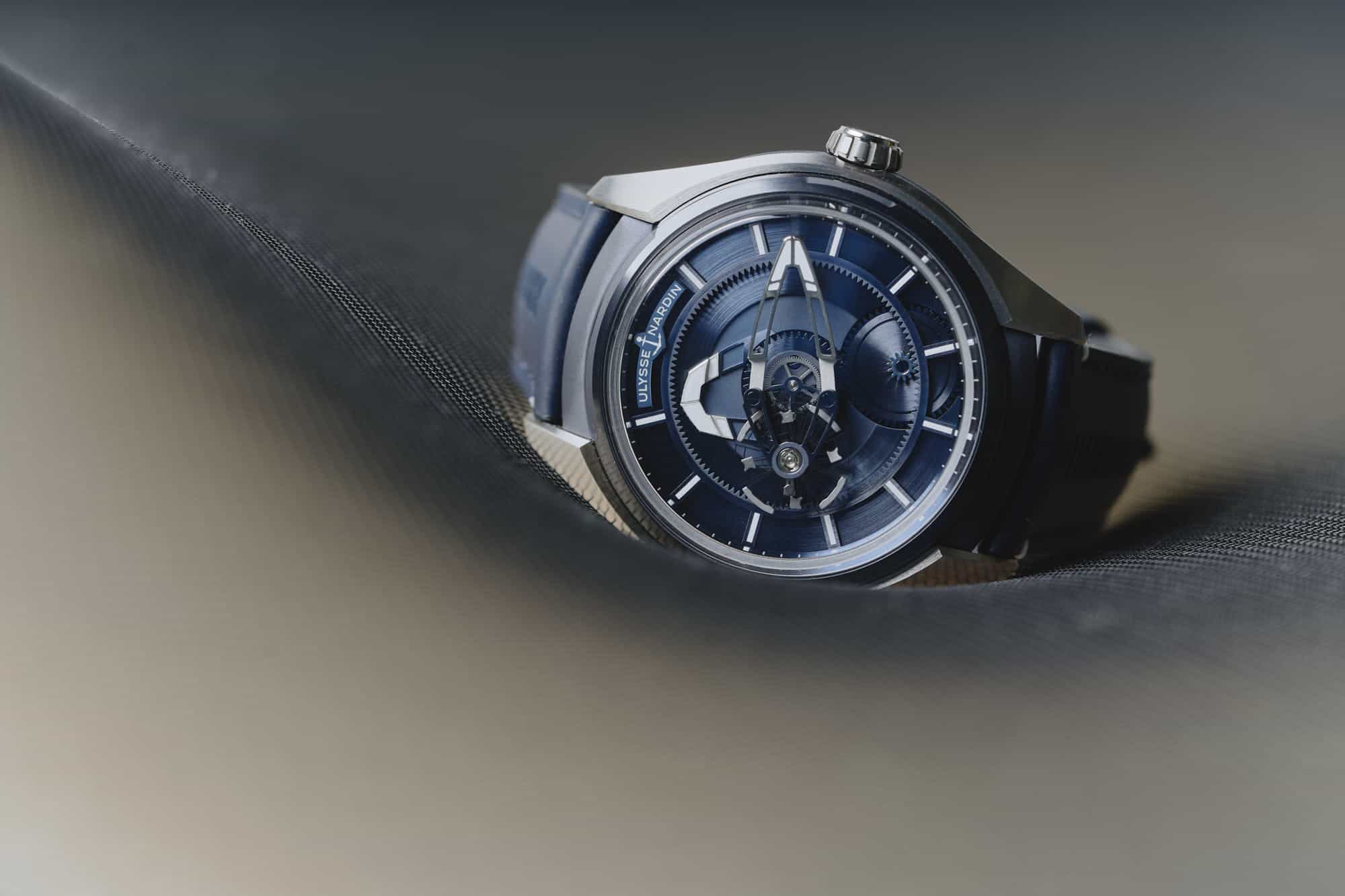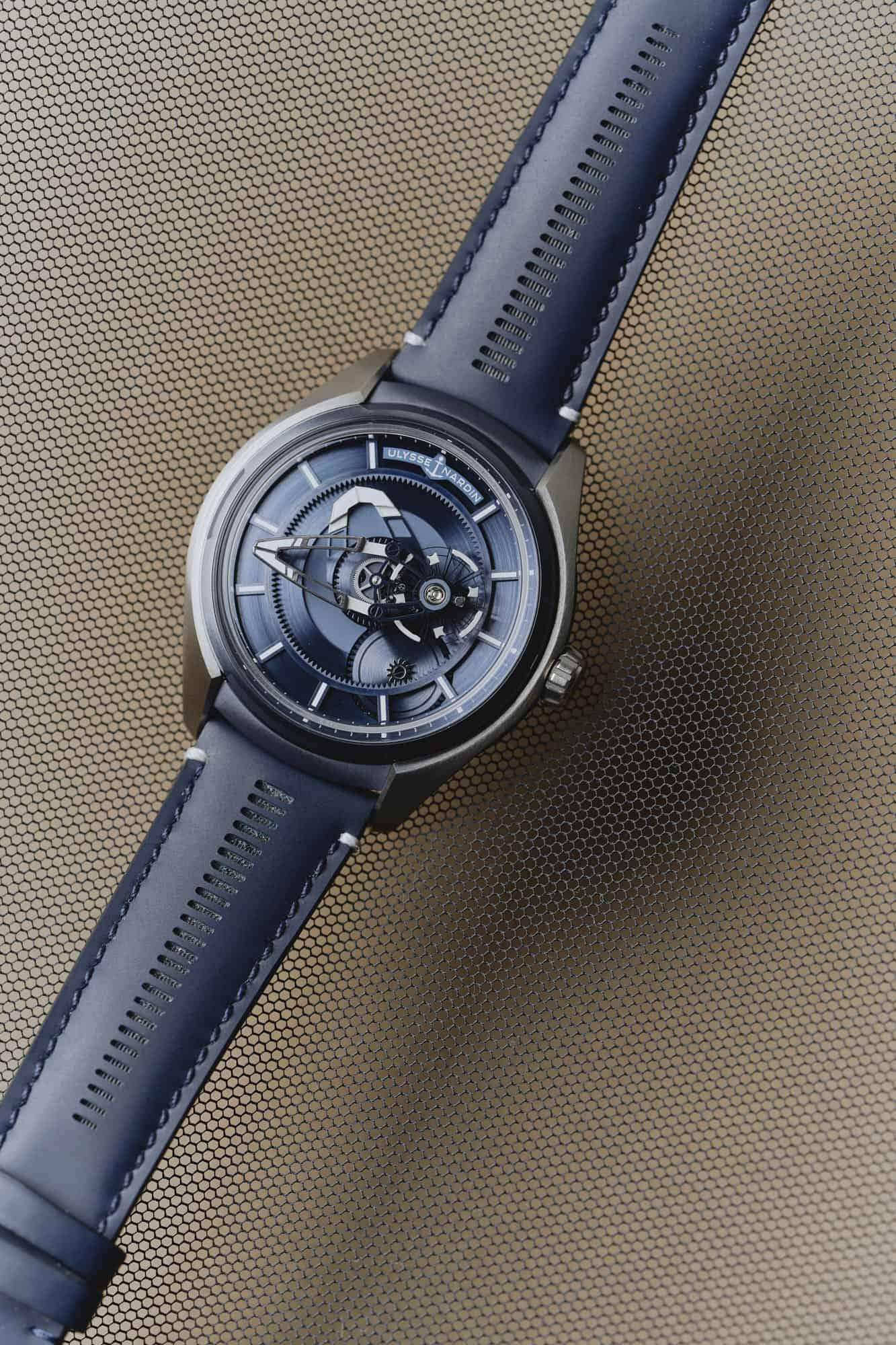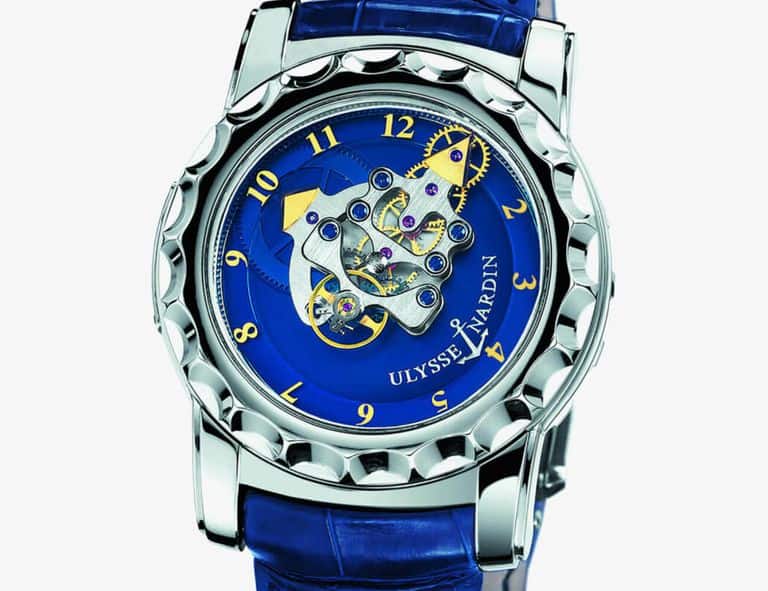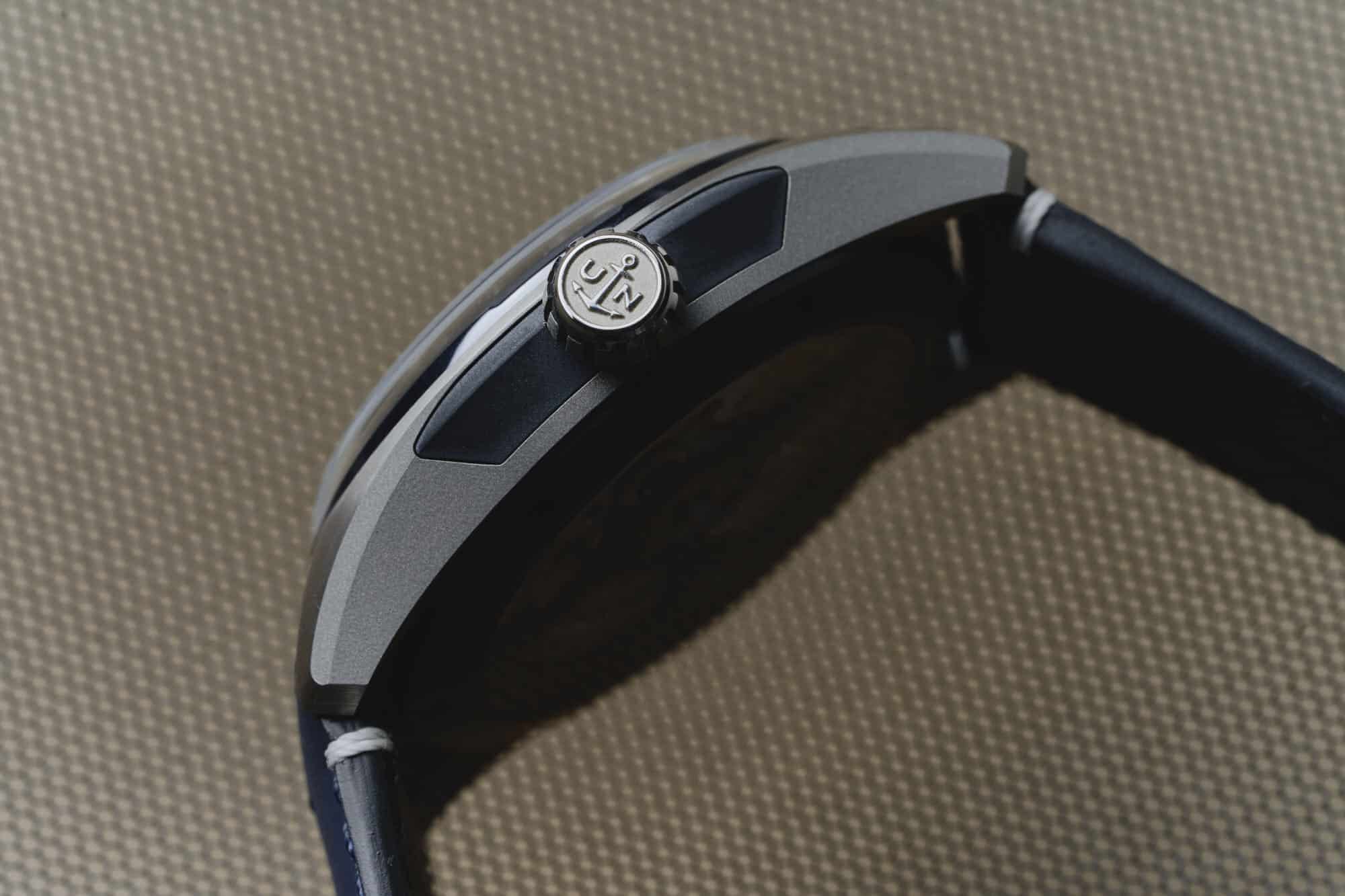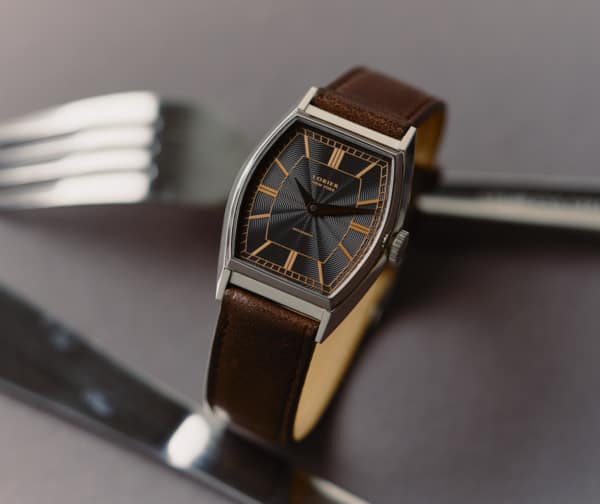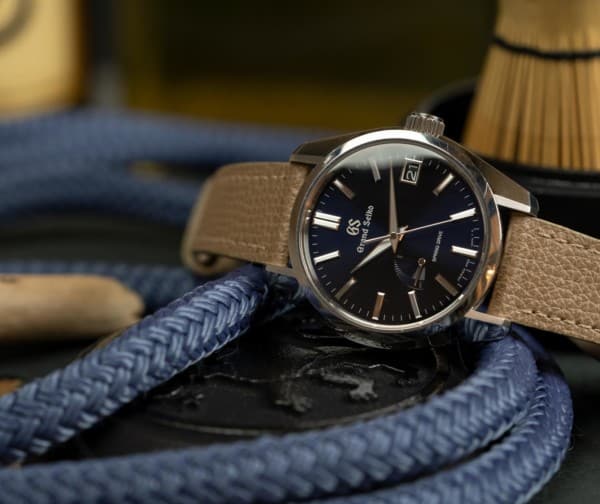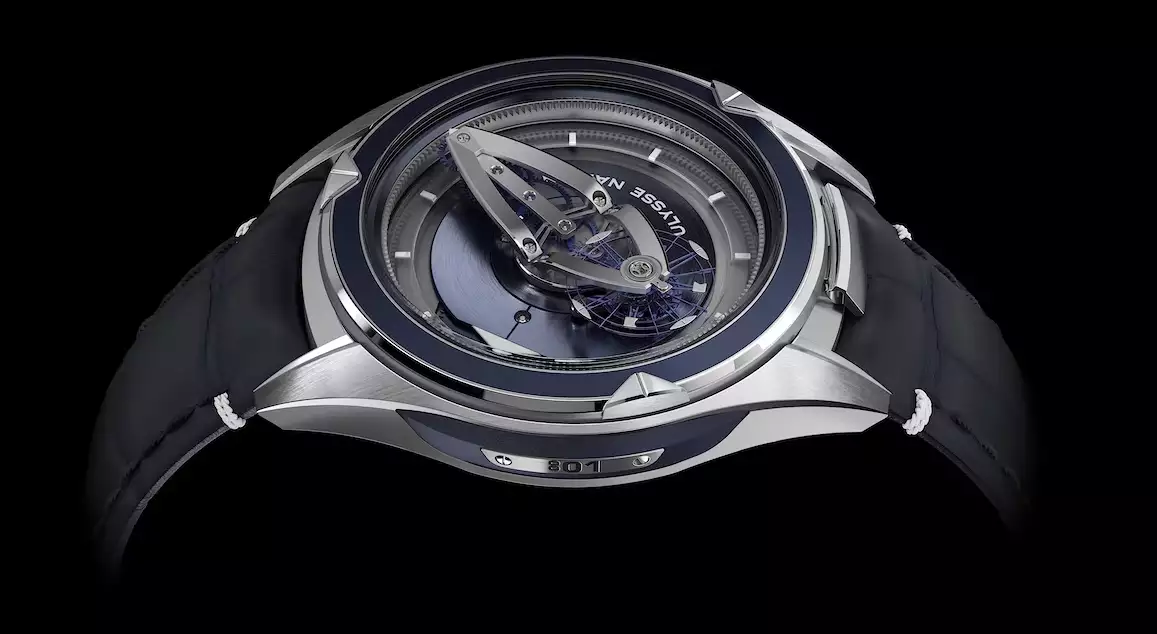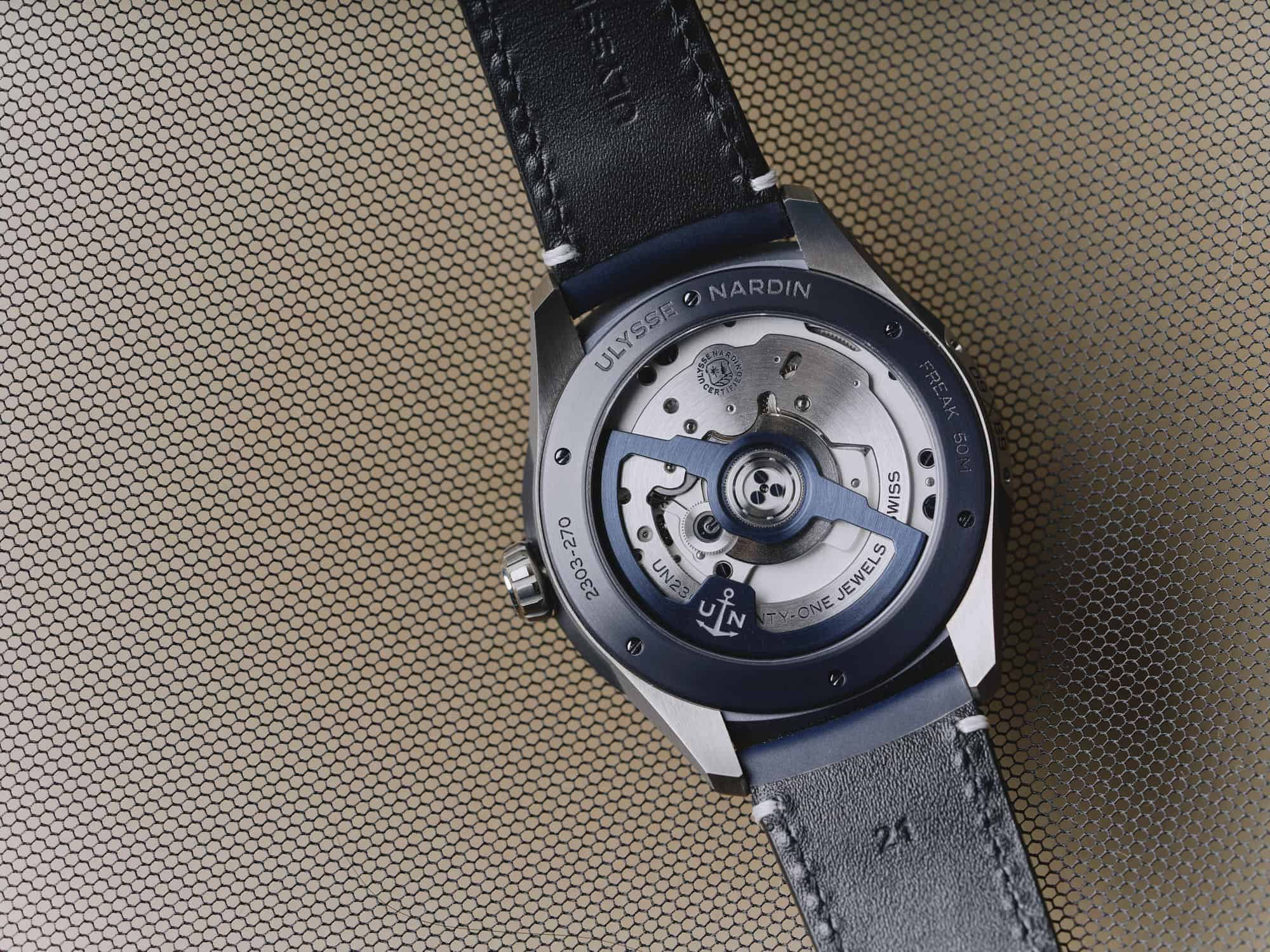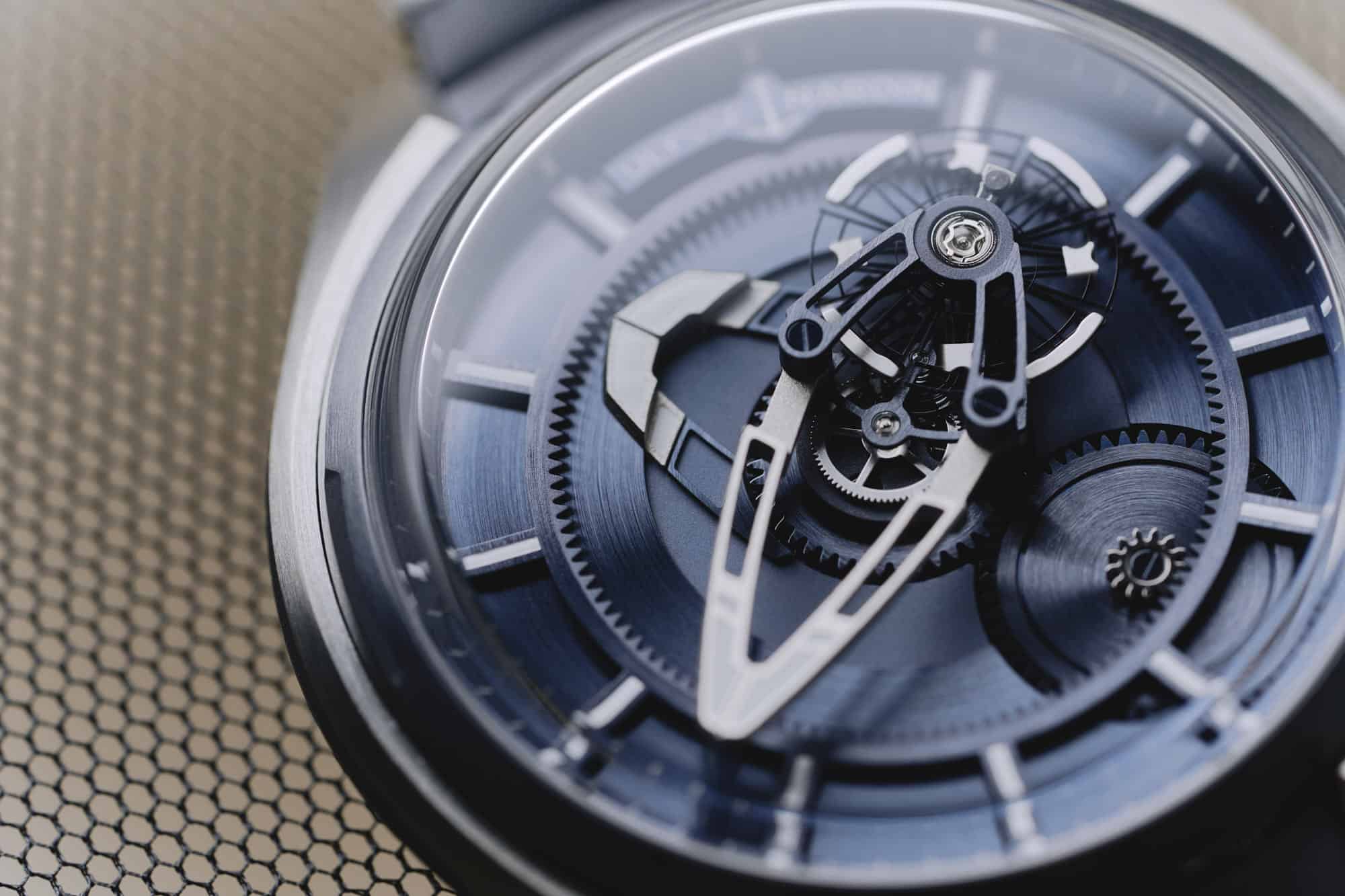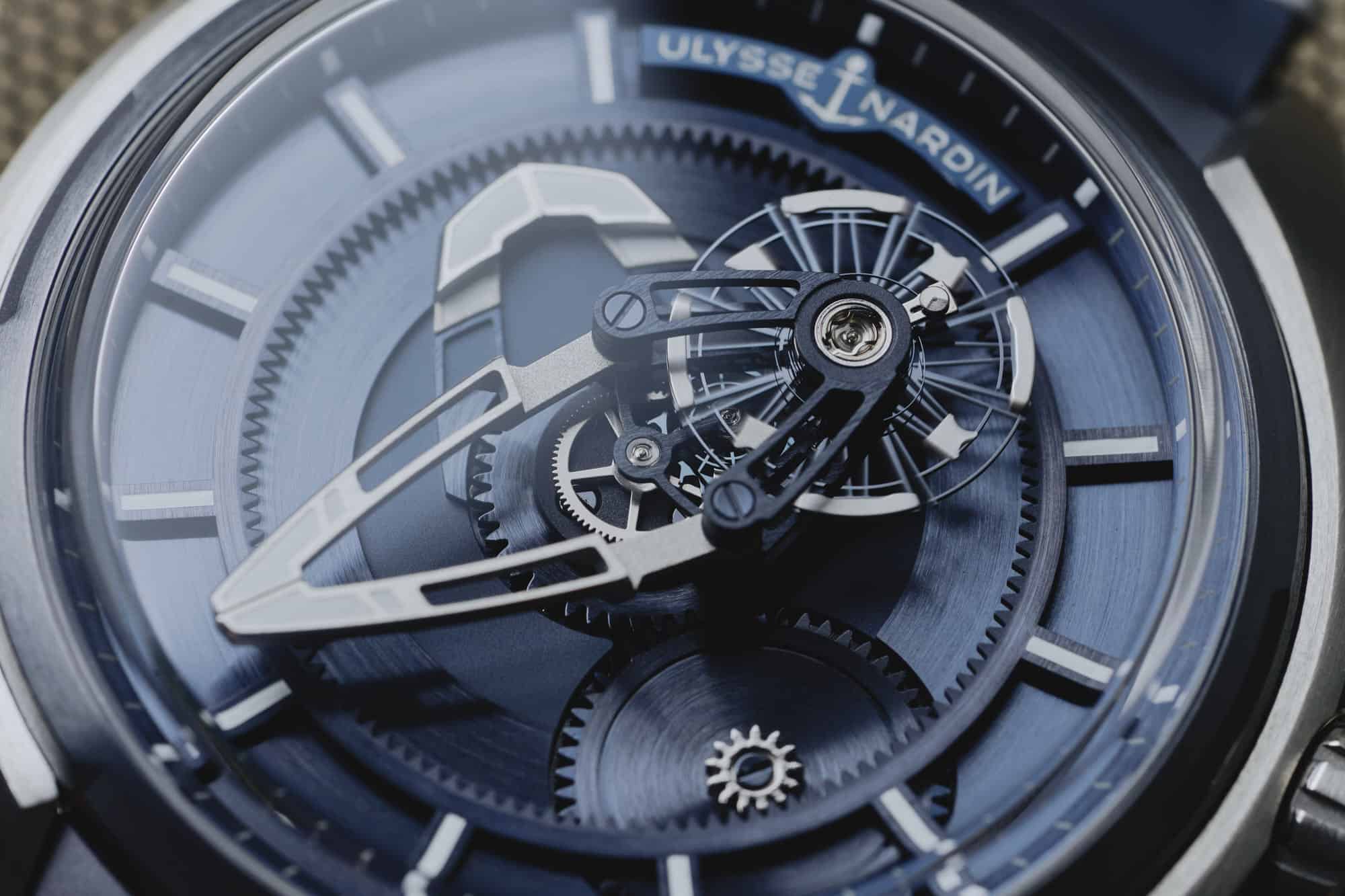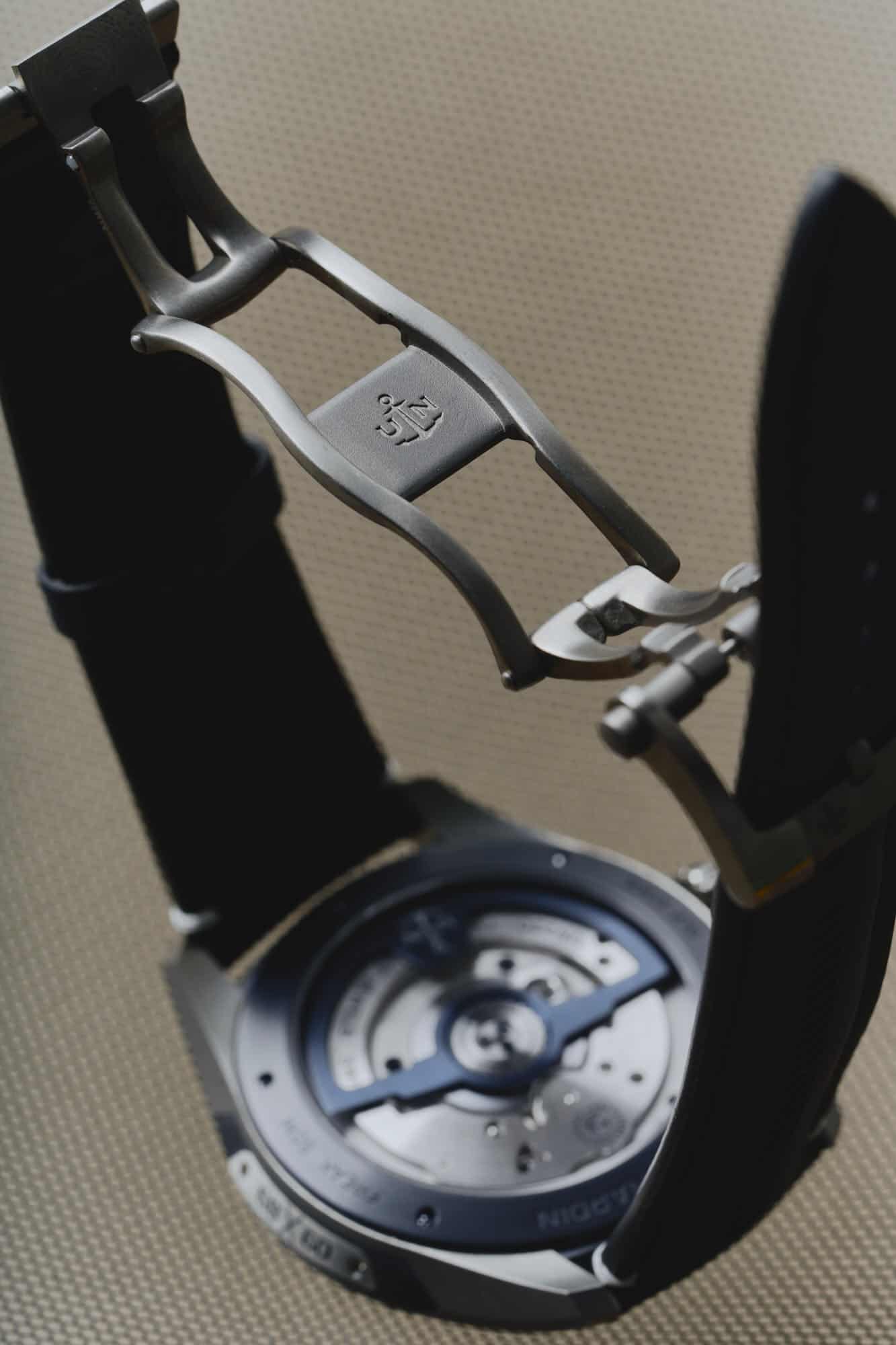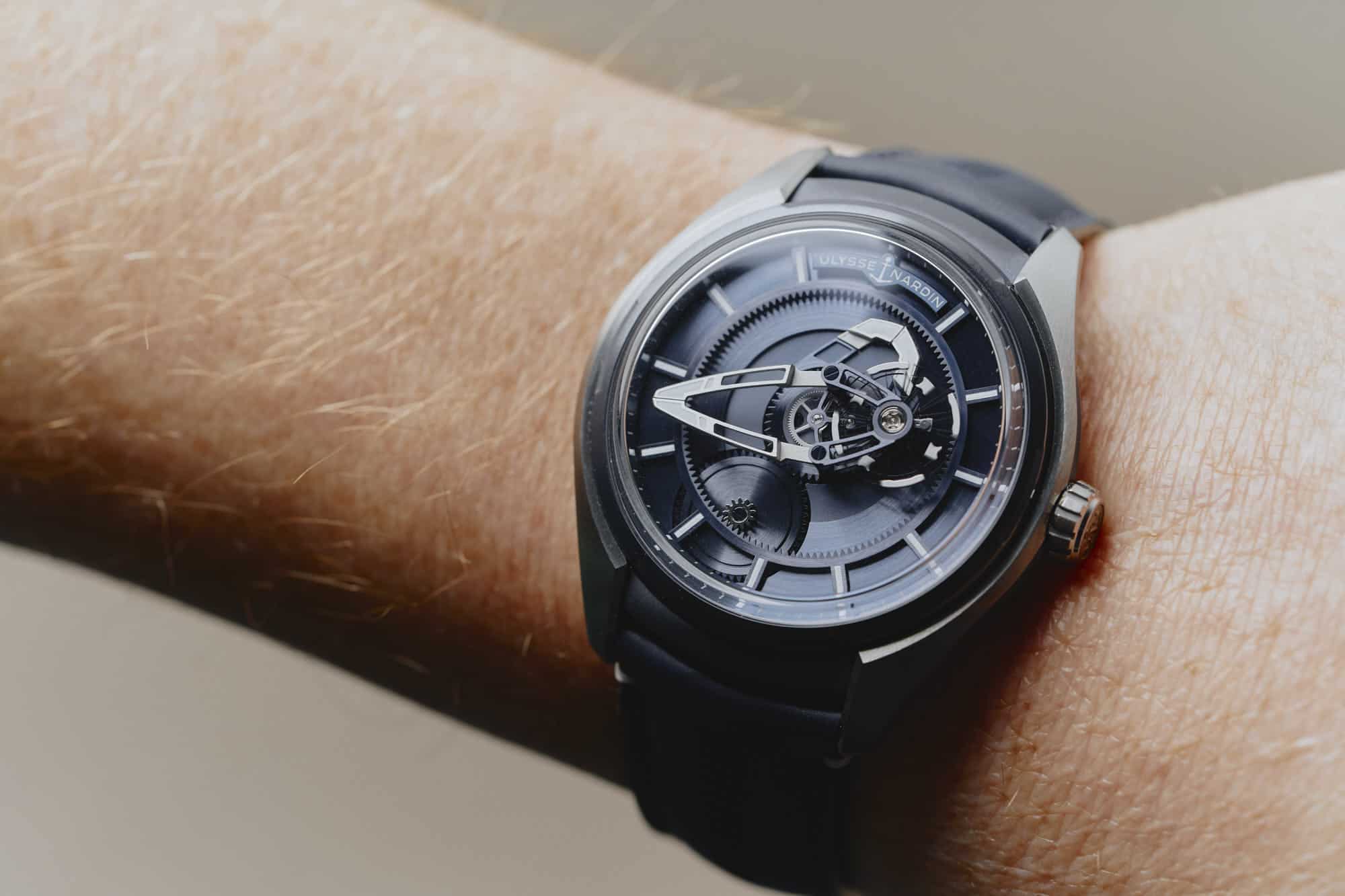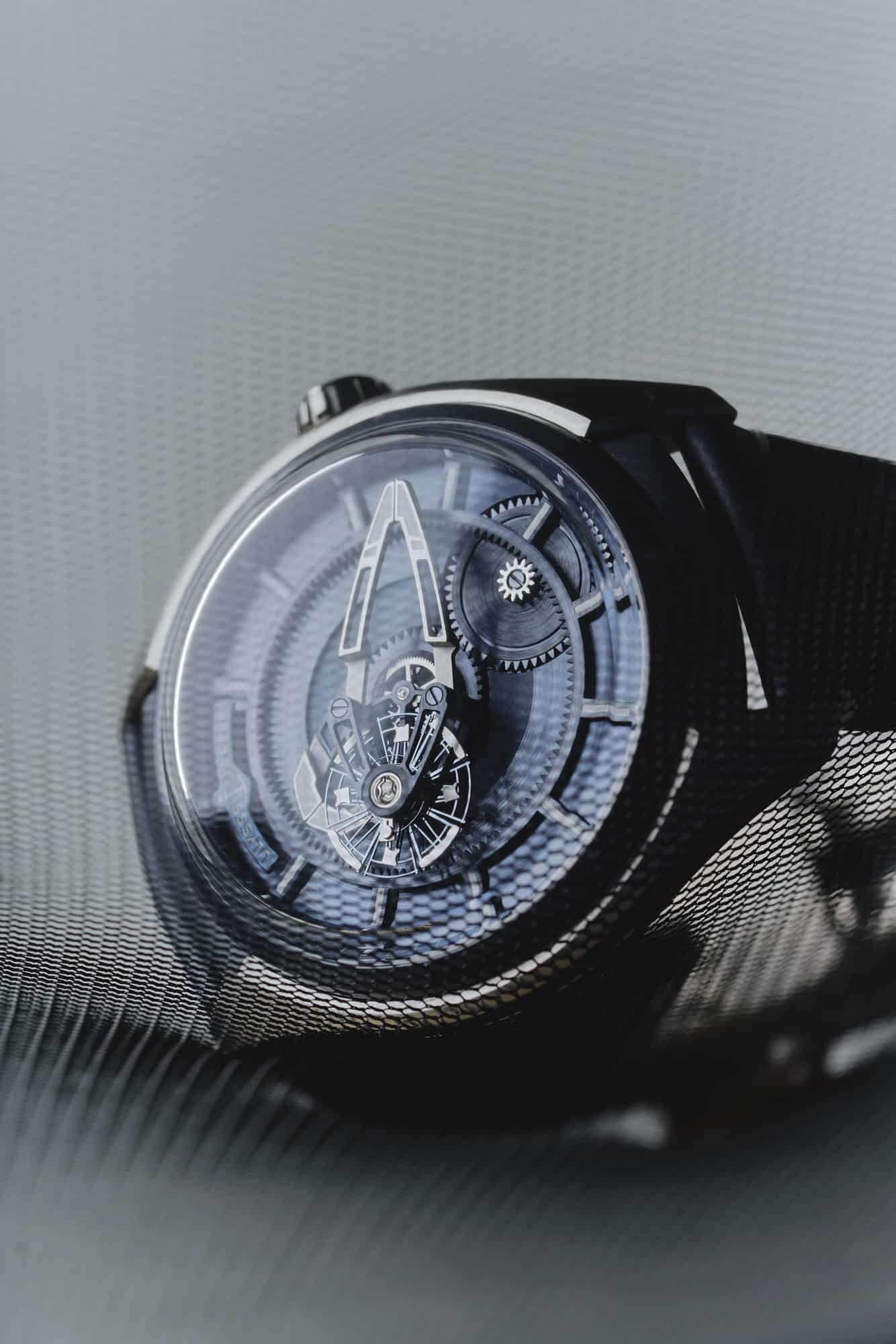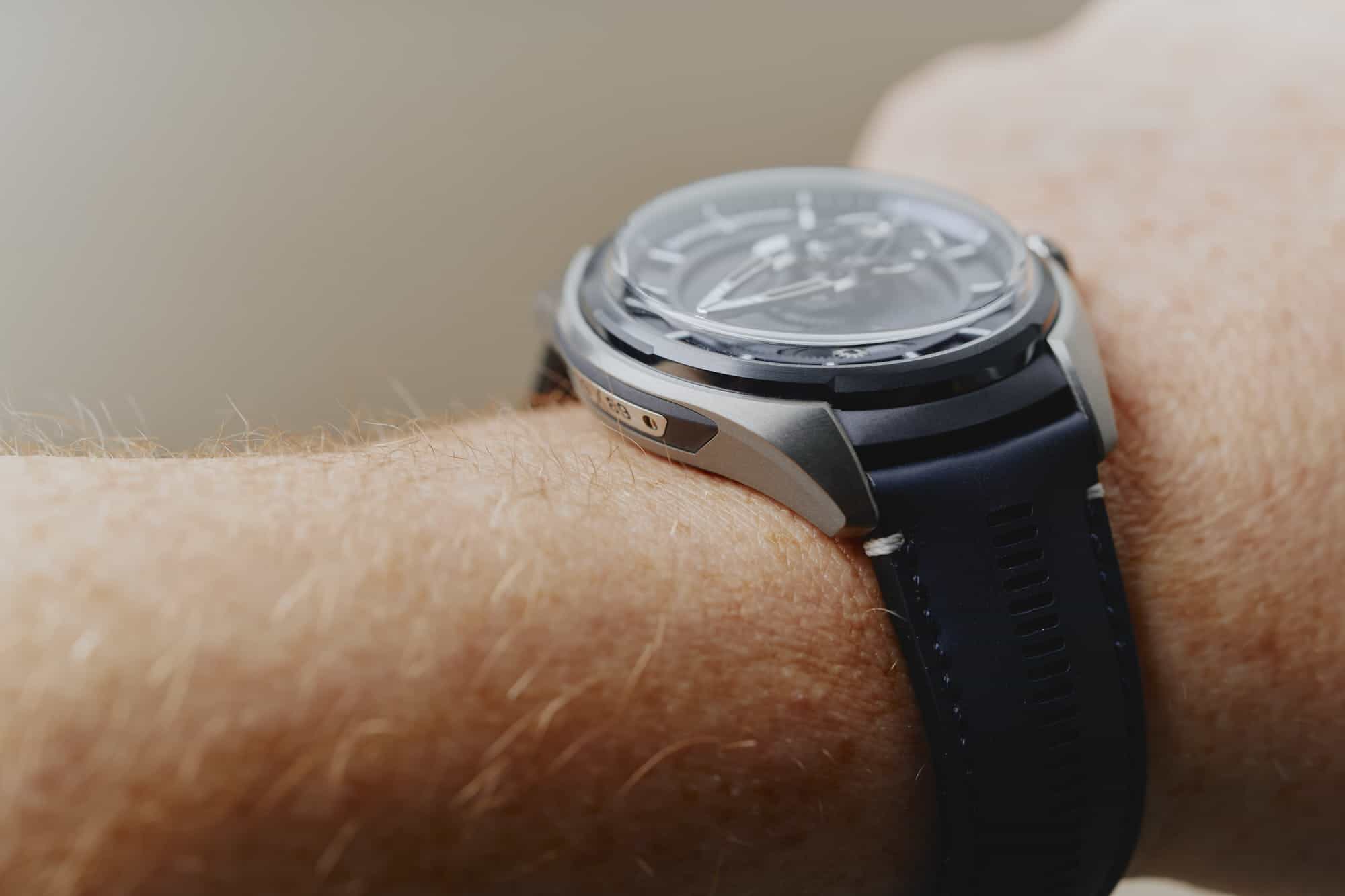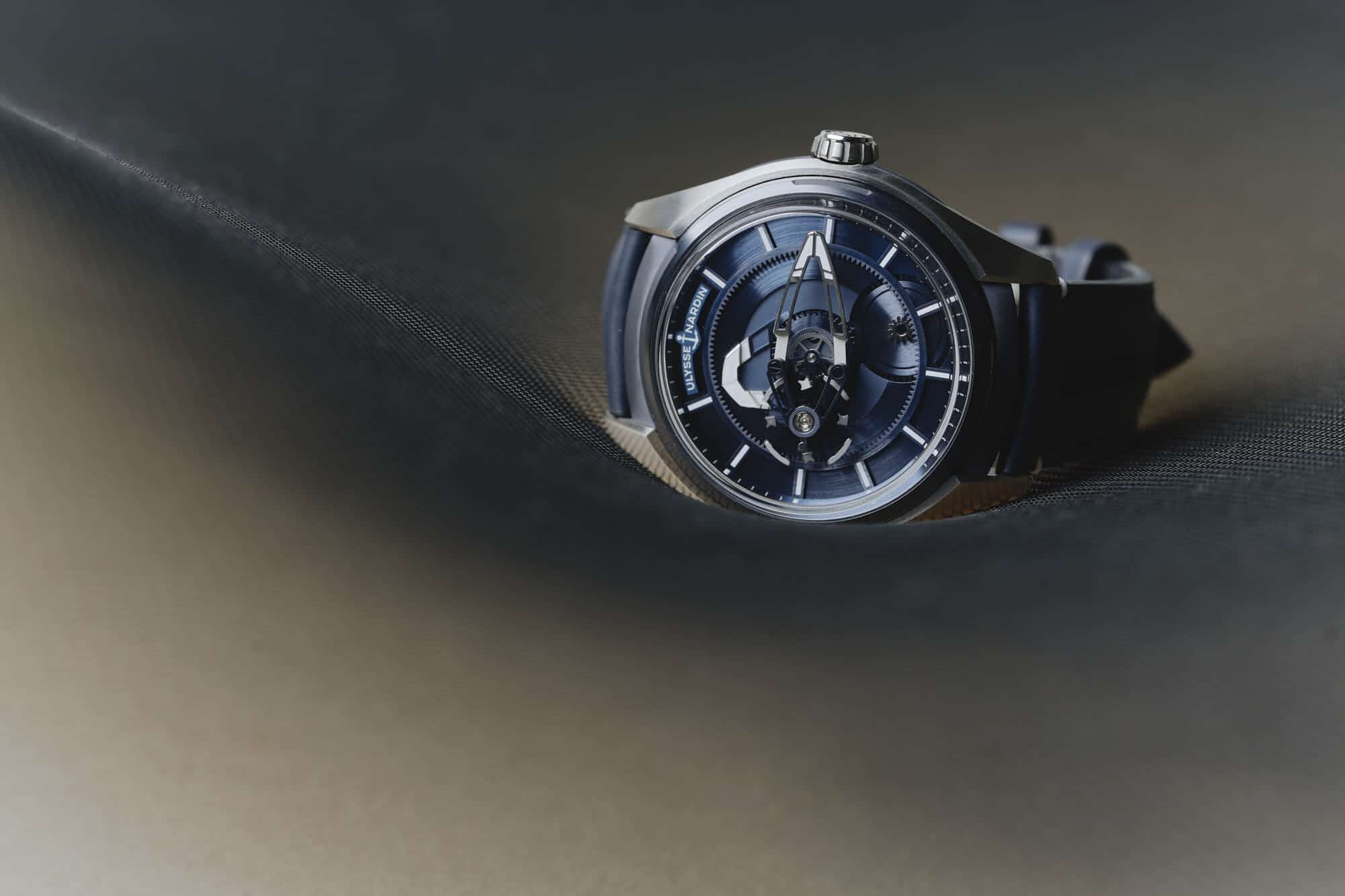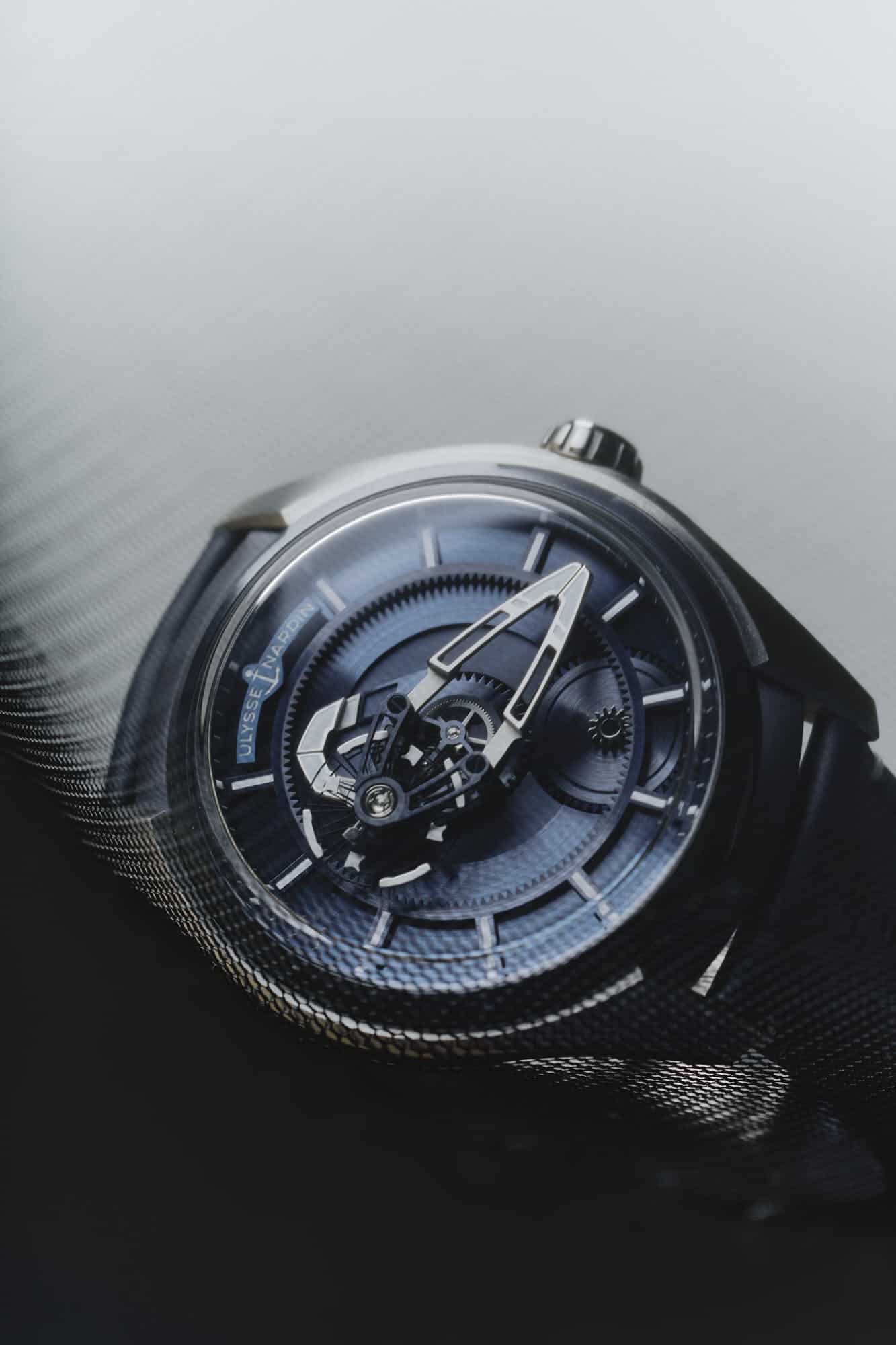Even with the welcome ergonomic changes and simplified movement, the Freak X reads as a Freak thanks to the design of the minute and hour hands. They are large structures that take a bit of getting used to, but I found them to be just as usable as a traditional handset with little fuss. The white tip of the minute hand is easy to spot from any distance thanks to its sheer size, and despite the wide hour hand sometimes getting lost in the shuffle, I found it relatively easy to get a read on where I was within any given hour simply from the minute hand alone. Surprisingly, the balance never really interfered with reading the time, largely thanks to how Ulysse Nardin has created contrast in the right areas between the hand structures and the base dial components.
![]()
What makes the Freak X so compelling is the manner in which it finds balance between something truly innovative and exotic, and being everyday usable. One could argue that it’s lost too much of the outlandish Freak personality in the process, and I’d say that argument has some merit, but it’s also achieved something no other Freak has managed, and that is simplicity. This is a practical watch, which can’t be said for many other watches that play in this space of heavily altered and downright novel mechanisms for displaying the time. Sure, it doesn’t have the full train on display, nor the trick constant force escapement, but the Freak X is still instantly recognizable as a Freak, and once again, has made itself available to a new subset of enthusiasts in the process.
![]()
The Freak X is priced at $26,400, which is quite a lot of money. I’d make the argument that it’s actually a lot of watch for the money, a much more interesting prospect than most watches found in the price segment. For context, the Freak Vision upon which this watch is based is priced at $95,000. At $26,400, the Freak enters new territory, and while Ulysse Nardin the brand may not enjoy the same cache as other luxury brands at the moment, they deserve every bit the respect demanded by their contemporaries. When I think of truly innovative watches in the price range, there’s really only one other example that comes to mind, and that is Ressence.
![]()
The Freak as a concept, and as realized by Ulysse Nardin has served as a benchmark of horological innovation, from the materials at use, to the design of the movement itself, this is a watch that in no small part paved the way for the robust landscape of innovative and exotic watches we enjoy today. The Freak X carries the same DNA as the first reference released over 20 years ago, and what it’s lost in complexity, it’s gained in practicality and value, distilling the essence of the original thesis into something ultimately more usable, which might make it the most important Freak of all. The Freak X has bridged the gap between generations, and presents a platform ripe for evolution.
![]()
Overall, and aside from the considerable heritage it represents, the Freak X is a fun and interesting watch that skirts convention in all the right ways, without compromising core functionality. It’s pricey, and it’s not perfect, but this is exactly the kind of watch we need more of, and if it wasn’t already, shows exactly why Ulysse Nardin should be on every enthusiast’s radar.









 Featured Videos
Featured Videos




